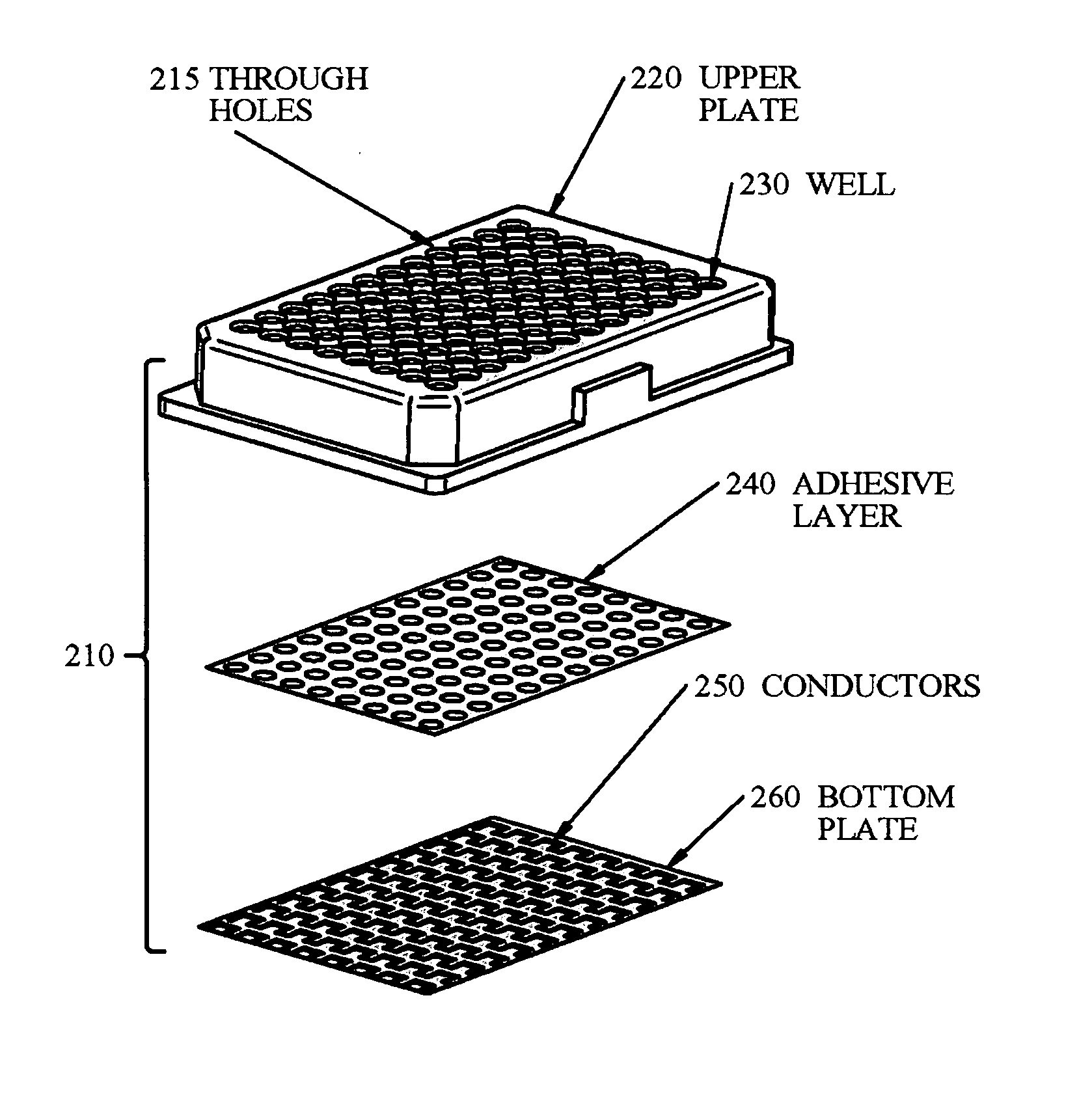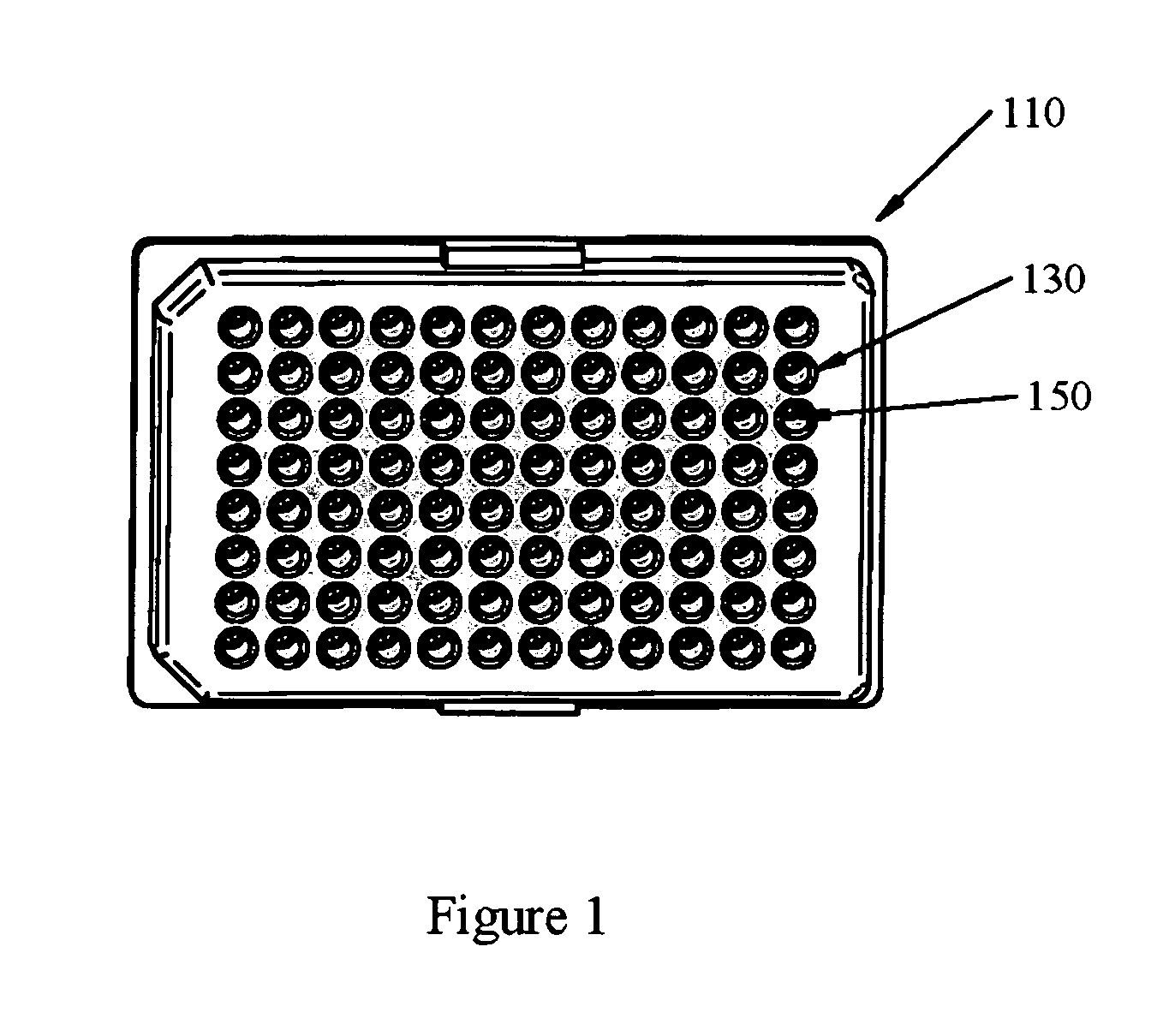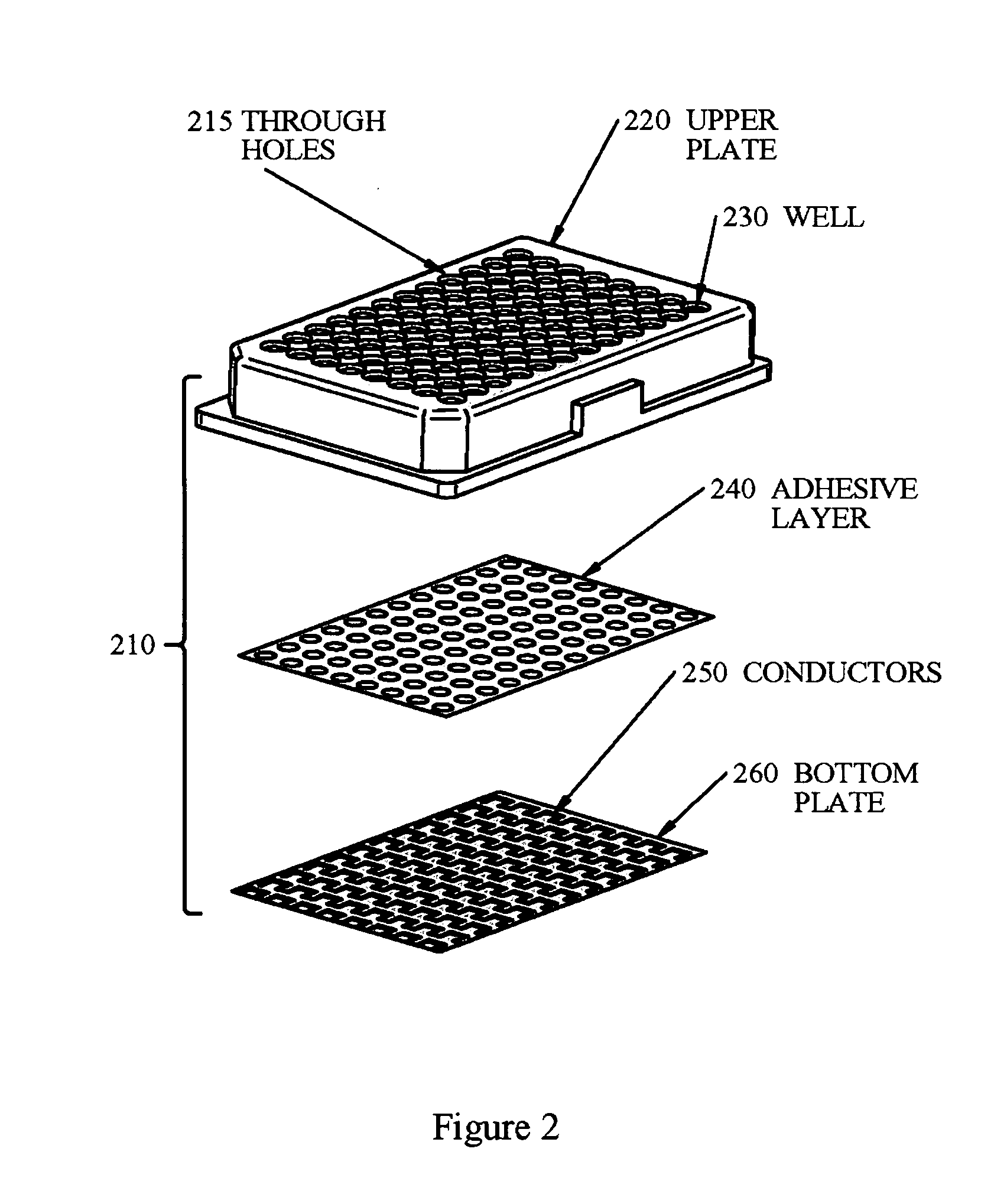Multiwell sample plate with integrated impedance electrodes and connection scheme
a multi-well sample plate and impedance electrode technology, applied in the field of screening devices, can solve the problems of reducing throughput speed, not allowing, and adding a level of complexity to the high throughput process
- Summary
- Abstract
- Description
- Claims
- Application Information
AI Technical Summary
Benefits of technology
Problems solved by technology
Method used
Image
Examples
example 1
[0060] A bottom plate was fabricated from a 1 mm thick 122 mm×79 mm Borofloat™ glass substrate. Holes in the glass (0.030″) were drilled using an ultrasonic process. 1.6 microns of gold was sputtered onto both the top and bottom surfaces of the glass. At the same time, sputtered gold coated the inside surface of the drilled holes, forming an electrical via between to top and bottom surfaces of the glass. Photolithographic exposure and chemical etching techniques were then used to pattern the impedance measuring electrodes on the top surface of the bottom plate and to form the electrical contact pads on the bottom surface of the bottom plate. The electrodes were a pair of interdigitated finger combs with finger sizes of 30 microns in width and 2.5 mm in length. Gaps between the fingers on opposing combs were 30 microns.
[0061] The bottom plate was bonded using UV curable epoxy to a machined polystyrene upper plate containing 96 through holes in an 8×12 array. The 96 holes, each 6 mm ...
example 2
[0064] A bottom plate was fabricated from a 1 mm thick 122 mm×79 mm polystyrene sheet substrate. Holes in the polystyrene (0.030″) were drilled. 0.5 microns of gold was sputtered onto the top surface of the polystyrene through a thin metal mask or stencil in order to create the electrode pattern. The electrodes were a pair of interdigitated finger combs with finger sizes of 200 microns in width and 1.5 mm in length. Gaps between the fingers on opposing combs were 200 microns. At the same time as the electrodes were created, sputtered gold coated the inside surface of the drilled holes. Subsequently, 0.5 microns of gold was sputtered onto the bottom surface of the polystyrene through a thin metal mask or stencil in order to create the electrical contact pad pattern. At the same time, sputtered gold again coated the inside surface of the drilled holes, forming an electrical via between to top and bottom surfaces of the polystyrene. After fabrication of the gold features on the polysty...
example 3
[0069] Bottom plates were fabricated from a 0.005″ thick polyester sheet substrate. Holes in the polystyrene (0.15 mm) were laser drilled in a pattern to match with the electrical vias to be created in a later step in the bottom plate. Conductive silver ink was used in a screen printing process to create the electrical contact pads on the bottom surface of the bottom plate material and to fill into the drilled via holes. Subsequently, a second printing pass with silver ink was used to print features on the top surface of the bottom plate, leading from the drilled vias towards a location near where the center of the microplate wells will be created when the bottom plate and upper plate are bonded. Subsequently, fingers of gold ink were printed creating an interdigitated finger pattern between the two silver leads. Each gold finger overlapped on one end with one of the silver leads. In the last printing step, a dielectric ink was printed, covering the entire surface top surface of the...
PUM
 Login to View More
Login to View More Abstract
Description
Claims
Application Information
 Login to View More
Login to View More - Generate Ideas
- Intellectual Property
- Life Sciences
- Materials
- Tech Scout
- Unparalleled Data Quality
- Higher Quality Content
- 60% Fewer Hallucinations
Browse by: Latest US Patents, China's latest patents, Technical Efficacy Thesaurus, Application Domain, Technology Topic, Popular Technical Reports.
© 2025 PatSnap. All rights reserved.Legal|Privacy policy|Modern Slavery Act Transparency Statement|Sitemap|About US| Contact US: help@patsnap.com



